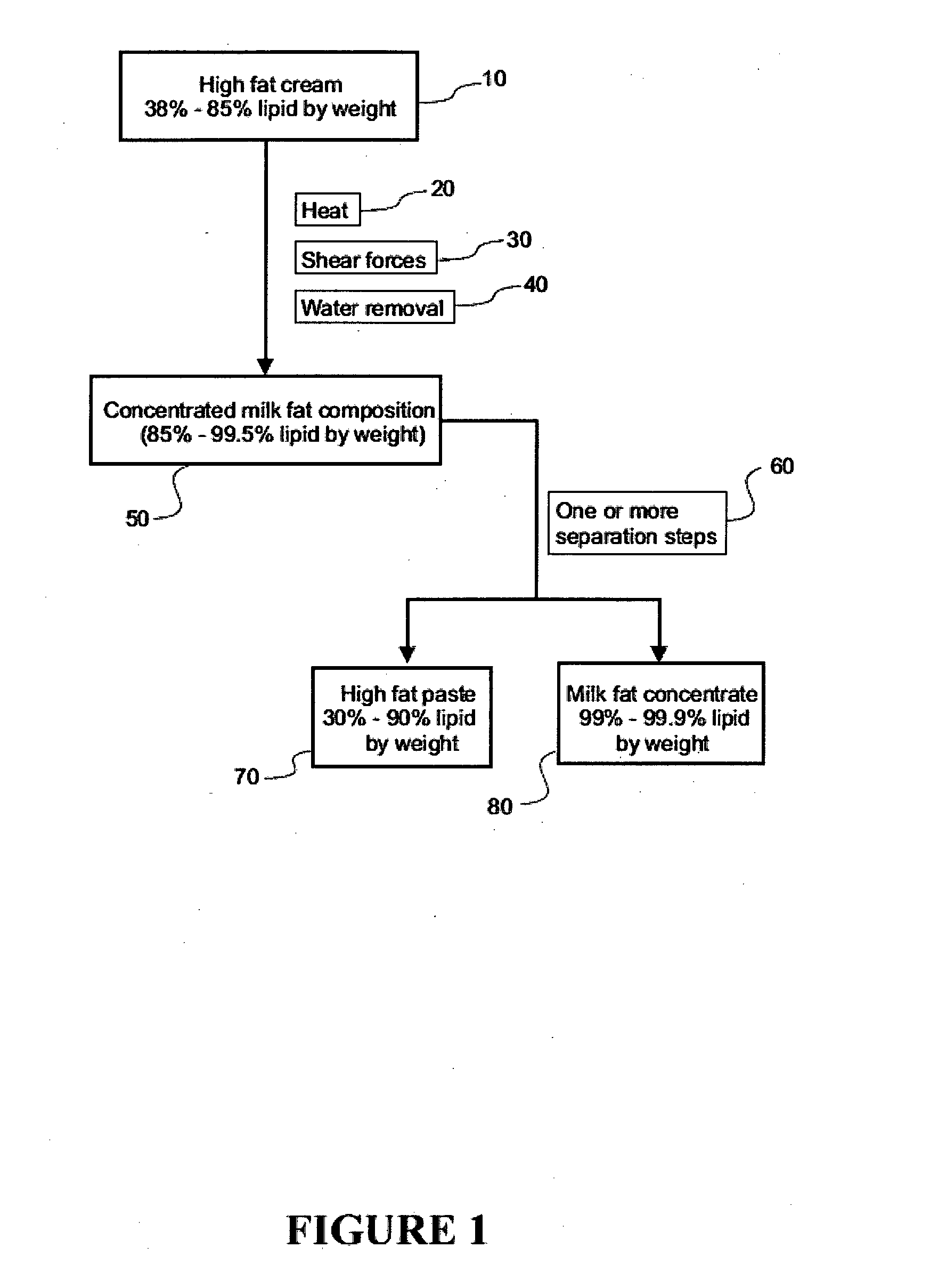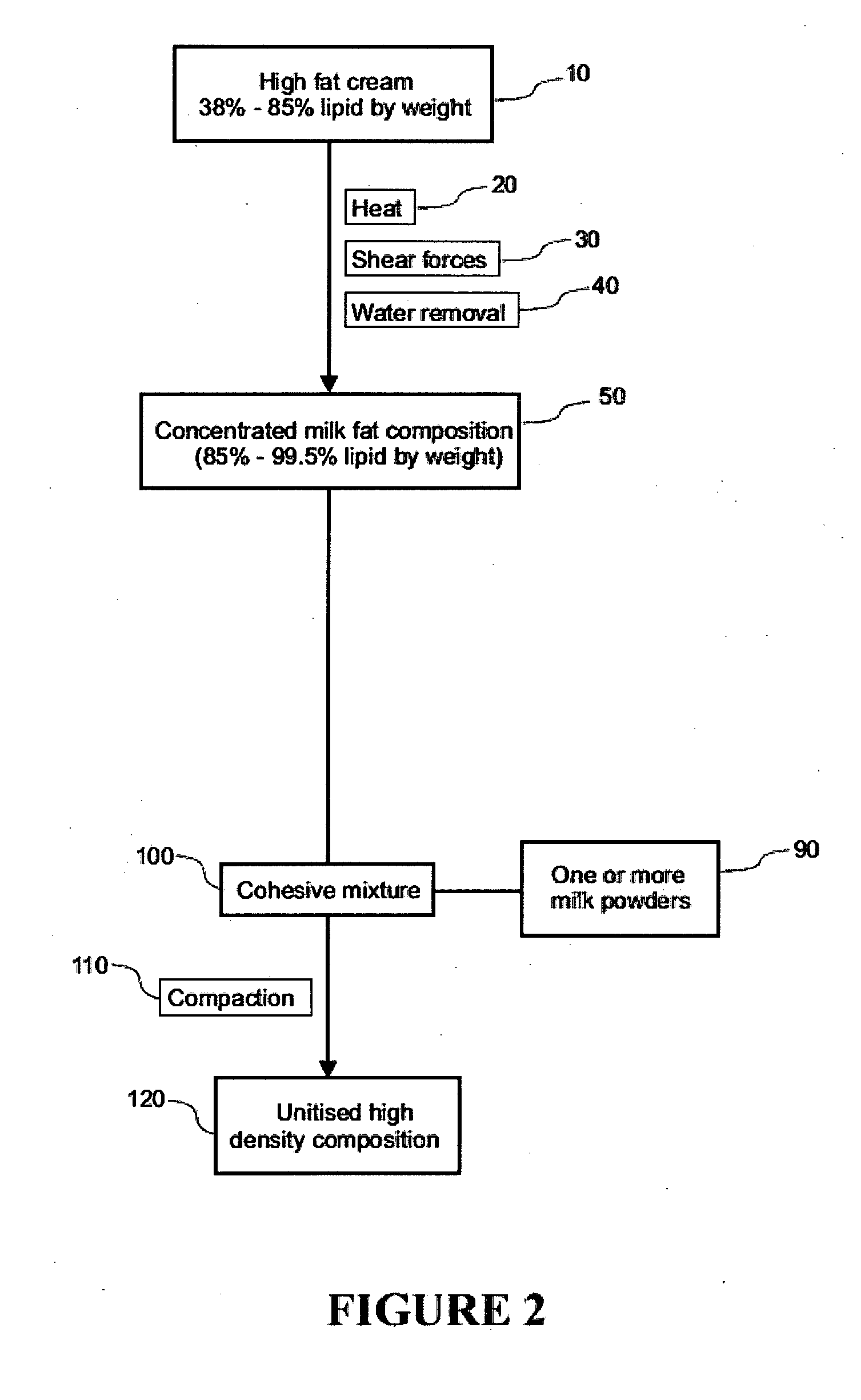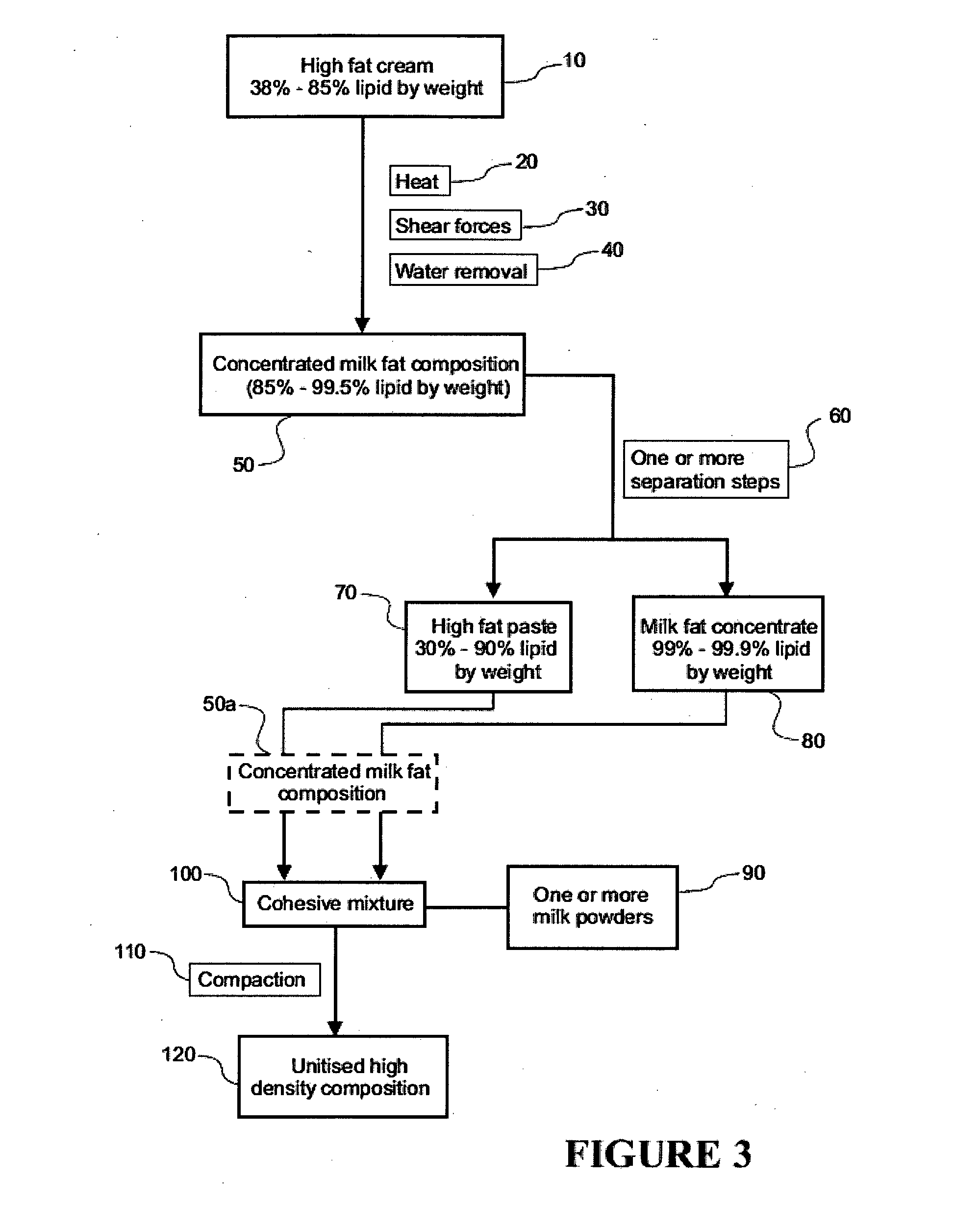Production of concentrated milk fat compositions and unitised high density compositions
a technology of concentrated milk fat and composition, which is applied in the fields of fatty oil/fat production, food science, application, etc., can solve the problems of uneconomical international shipping in liquid form, the need for multiple separation steps, and the potential loss of oil-continuous phase. to achieve the effect of maximising spa
- Summary
- Abstract
- Description
- Claims
- Application Information
AI Technical Summary
Benefits of technology
Problems solved by technology
Method used
Image
Examples
example 1
Production of a Concentrated Milk Fat Composition by Thin Film Evaporation
[0118]Whole milk (Fonterra Co-operative Group Limited, New Zealand) was pasteurised (75° C. for 15 s) and centrifuged to separate the milk into skim milk and cream of about 40% fat by weight. The cream was further separated with a high fat cream centrifugal separator (Westfalia™ MSD50, GEA) to produce a high fat cream of about 80% fat by weight.
[0119]The high fat cream was then directed to a horizontal co-current agitated thin film evaporator (ATFE) with heated wall surface area of 5.25 sq. ft., rotor diameter 30 cm and gap between blade and heated wall 3 mm (Artisan Industries, Inc, USA). The ATFE was fitted with a preheating system, a condenser and a vacuum pump. The cream at a flow rate of 130 kg / h was heated to a temperature of 120° C. by direct steam injection and held for a residence time of 4 s, set by the volume of the transfer pipe to the evaporator. The ATFE was run at an absolute pressure of 22 kPa,...
example 2
Production of Concentrated Milk Fat Compositions
[0120]High fat cream (HFC) of about 80% fat by weight was produced according to Example 1. The HFC was treated according to one of the four following methods and inverted from an oil-in-water emulsion to a water-in-oil emulsion to form a concentrated milk fat composition (CMFC).
example 2a
[0121]HFC at 65° C. was pumped by positive lobe pump through a steam heated plate heat exchanger (Pasilac, Denmark) to 101° C. and stored in a static vessel. The HFC remained as an “oil in water” emulsion. The HFC was then directed to a horizontal co-current agitated thin film evaporator (ATFE) with heated wall surface area of 5.25 sq. ft., rotor diameter 30 cm and gap between blade and heated wall 3 mm (Artisan Industries, Inc, USA). The ATFE was fitted with a preheating system, a condenser and a vacuum pump. The HFC at a flow rate of 120 kg / h was heated to a temperature of 120° C. by direct steam injection and held for a residence time of 4 s, set by the volume of the transfer pipe to the evaporator (before flashing into the ATFE). The ATFE was run at an absolute pressure of 20.5 kPa, heating jacket pressure of 250 kPa (absolute) and rotor speed of 712 rpm. The resulting CMFC was collected.
PUM
 Login to View More
Login to View More Abstract
Description
Claims
Application Information
 Login to View More
Login to View More - R&D
- Intellectual Property
- Life Sciences
- Materials
- Tech Scout
- Unparalleled Data Quality
- Higher Quality Content
- 60% Fewer Hallucinations
Browse by: Latest US Patents, China's latest patents, Technical Efficacy Thesaurus, Application Domain, Technology Topic, Popular Technical Reports.
© 2025 PatSnap. All rights reserved.Legal|Privacy policy|Modern Slavery Act Transparency Statement|Sitemap|About US| Contact US: help@patsnap.com



